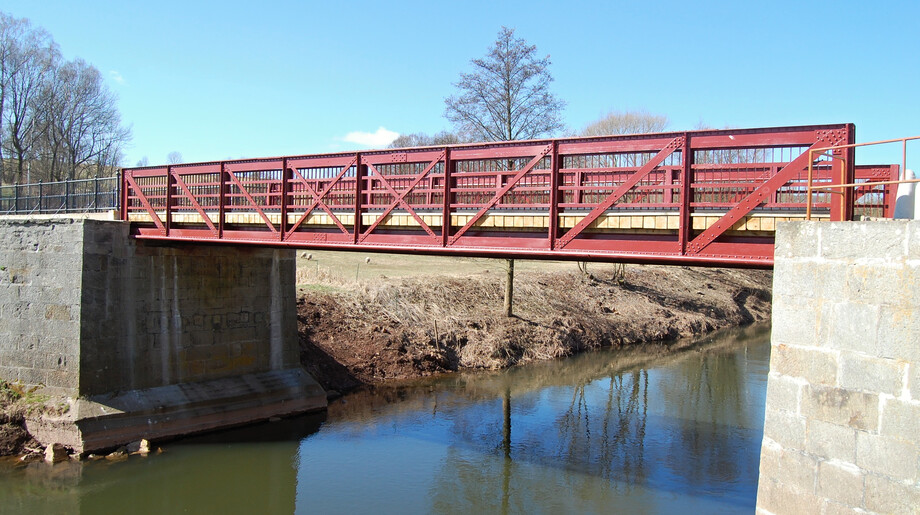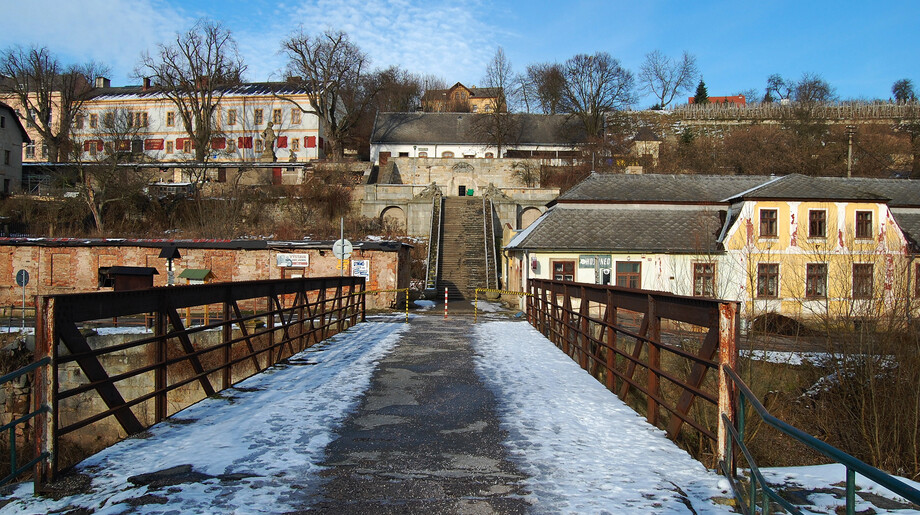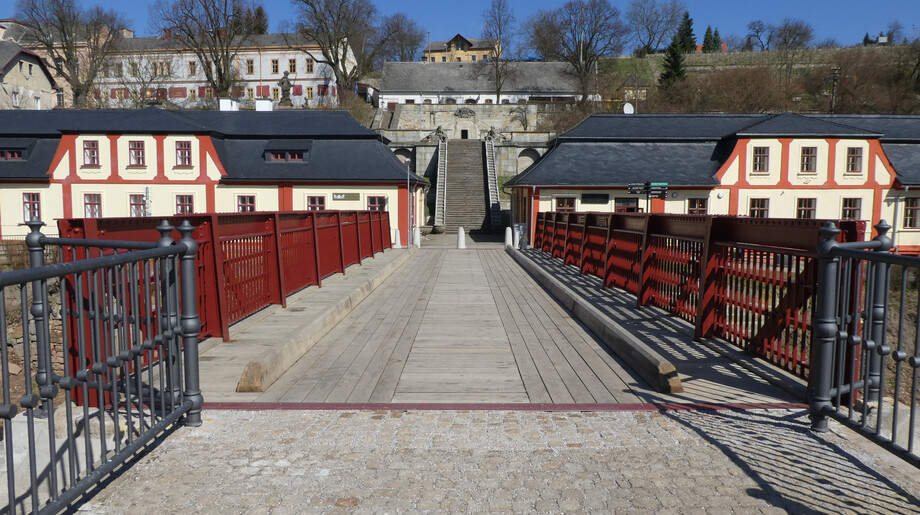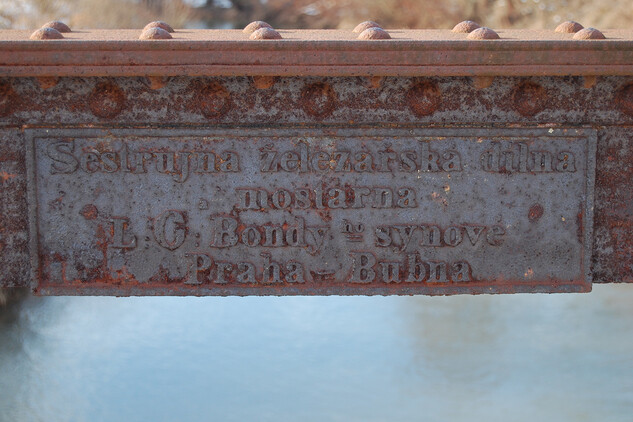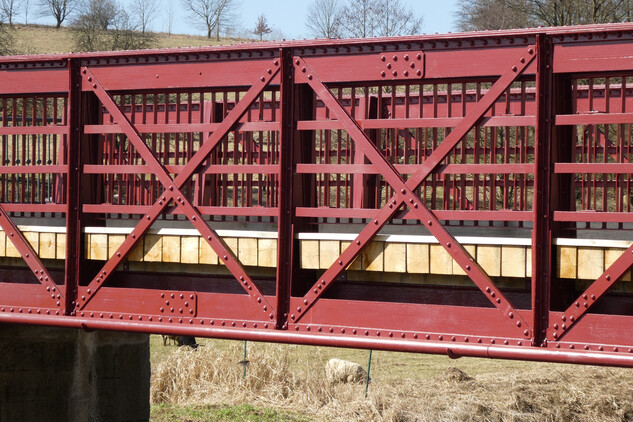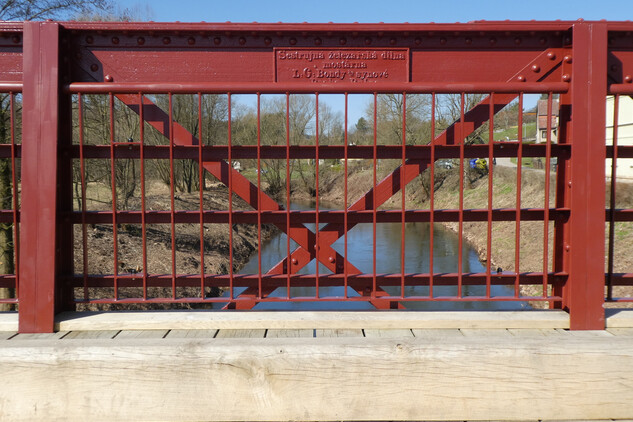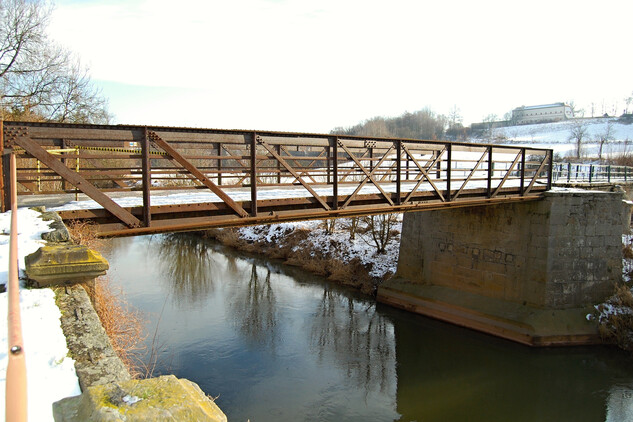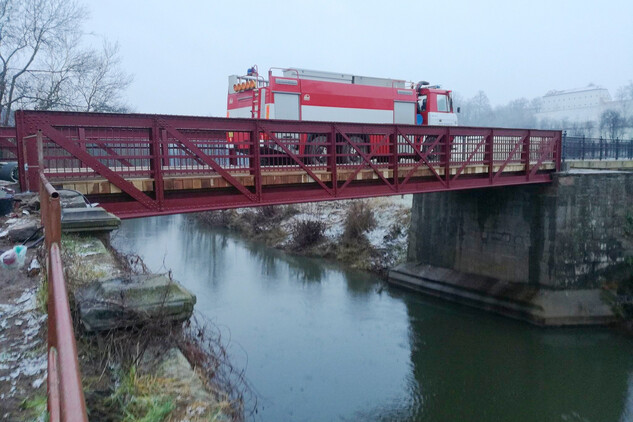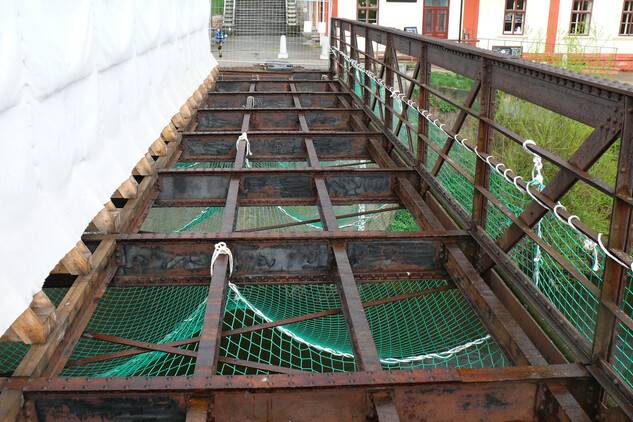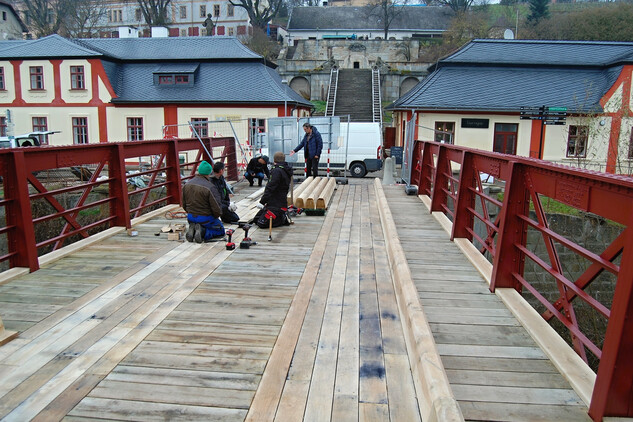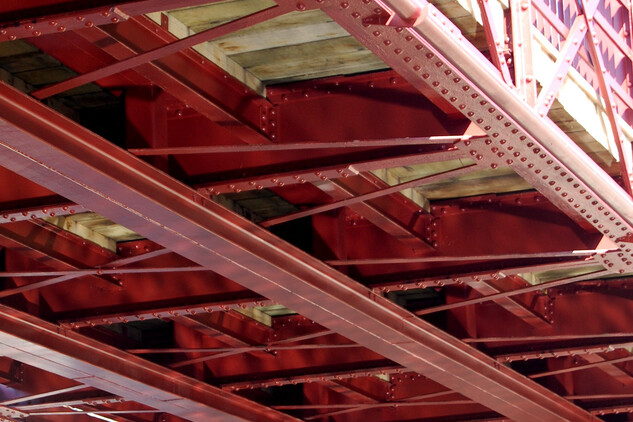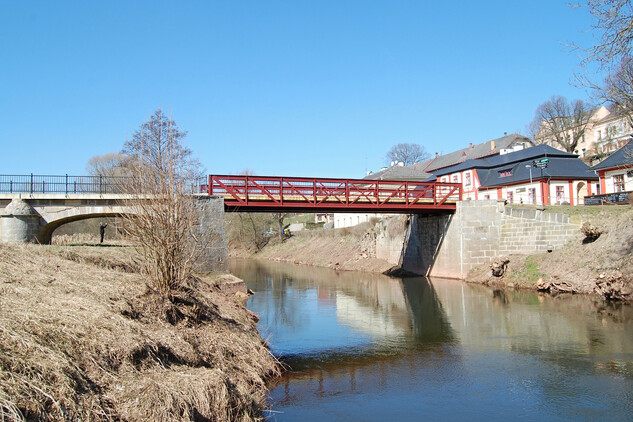Between the Kuks village and the famous hospital area, the local road across the Elbe River uses one of the oldest steel truss bridges in our country. The bridge consists of two parts – the stone part, built in the last quarter of the 18th century, with four arches spanning over the Elbe flood plain, and steel truss part over the river itself, built in the early 1880s. The steel parts are connected by riveting, which is a traditional technique that’s no more used these days. In historical, architectural and construction terms, the bridge is very valuable as the steel truss structure that has connected both part of the former Baroque spa area in Kuks for more than 130 years, and it has become the integral part of the location.
The steel bridge was used for regular traffic until the 1990s. It was closed for car traffic in 2004, and in 2013 the number of people that could access the bridge at the same time was dramatically reduced. The reason was the low bearing capacity of the old steel structure, proven by repeated tests, and its overall critical conditions.
The solution of this critical solution was difficult due to uncertain ownership of the bridge. The key to the solution was the decision of the Kuks municipality to claim this ownership. Moreover, in late 2015, the bridge was designated a cultural heritage. It was the first formal step to its long-term preservation.
Then, Jan Chaloupský suggested the solution that, unlike previous project, made the bridge accessible even for fire trucks, which is necessary in case of fire in the hospital. The structure was fitted with two Vierendeel trusses that can easily carry the vehicle of the necessary weight. Then it was suggested to reinforce the bridge by additional lateral braces respecting the existing structure. To lower the load, the reinforced concrete deck was removed, including asphalt layers. The new deck is made of oak timbers. Corroded elements were replaced, and rivets were once again used to connect the parts. The architectural part of the reconstruction project and the survey for the color design of surfaces was commissioned to architect Libor Sommer.
The renovation took place in 2017. Once the deck was removed, it showed that the lower part of the bridge was in relatively good shape. The reconstruction was carried out by Eurovia CS, a. s. Finally, the bridge was covered in dark red paint, corresponding to estimated original color. The renovation was far cheaper than estimated cost for a new project.
Thanks to the positive approach of all participants, and to the well-projected and expertly conducted renovation, the unique bridge was saved to keep serving people, and demonstrate the craftsmanship and aesthetics of the second half of the 19th century, as well as the surprising harmony of industrial steel structure and Baroque beauty of the former spa in Kuks.
Nominated for the Královéhradecký Region by the regional center of the National Heritage Institute in Josefov
The municipality of Kuks, represented by Mayor Jiří Beran, Jan Chaloupský, project designer, and Libor Sommer, author of the architectural part, were nominated for the National Heritage Institute Prize, category: Rescue of a Heritage Site.
